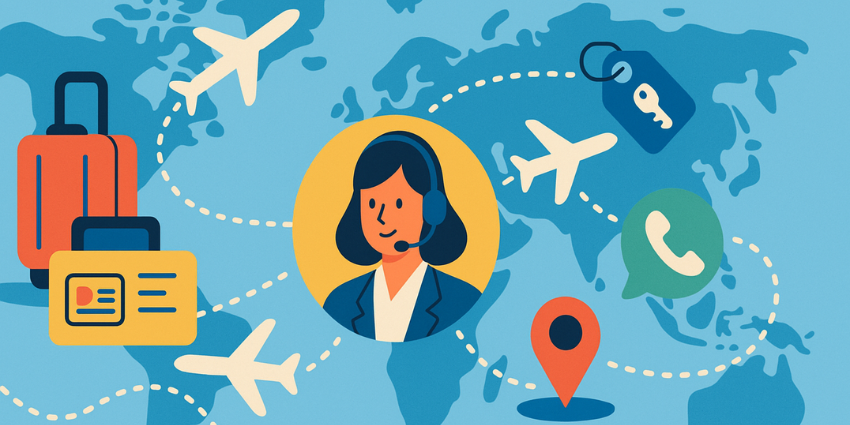CX Trends: A Year of Pragmatism and Proof
The next twelve months will test every assumption in customer experience. Economic pressure, rising costs, and cautious spending are pushing CX leaders to prove value faster.
Tim Banting, Head of Research at Techtelligence, says:
“The latter half of 2025 and 2026 will be a year of pragmatism.”
“Enterprises aren’t slamming on the brakes – they’re shifting focus toward tangible benefits.”
According to Techtelligence data from more than 1,800 organizations, 62% are actively researching or deploying new CX and UC platforms. These companies want measurable efficiency, reduced redundancy, and technology that pays back in time saved, not just promises kept.
Predictive, Personal, and Human: The New CX Frontier
An emerging CX trend focuses on evolving from reactive customer service to predictive empathy. Banting explains:
“We’re seeing AI move from automation toward predictive and personal intelligence. It’s becoming a more empathetic layer rather than a reactive service.”
Techtelligence data shows over 1,100 enterprises are currently exploring systems that combine automation with emotion-sensing AI to anticipate dissatisfaction before it surfaces. The intent is to retain loyalty in a slower economy where every customer counts.
However, this personal touch introduces new governance challenges. “You need to make sure your AI is explainable and that your data policies are auditable,” Banting warns. “You can’t just take AI’s word for it.”
For CX buyers, key evaluation questions include:
- How does the vendor ensure AI explainability?
- Is there a unified data layer to fuel the AI’s learning?
- What metrics show measurable impact on resolution speed or satisfaction?
Time Capital as the New Resource to Watch
If 2023 was about ROI, a CX trend to watch for in 2026 is ROT – Return on Time. “Success is being measured by time given back to employees and customers, not just money saved,” Banting explains. “Time capital will become as valuable as financial capital.”
This shift reframes efficiency from cost-cutting to time-creation. Shaving seconds off a call or automating back-office tasks compounds across thousands of interactions. Yet Banting cautions against shallow interpretations: “Time saved doesn’t automatically mean it’s used wisely. We should look at how AI helps productivity, not how many employees can be replaced with the time saved”.
For CX leaders, this is a wake-up call to expand metrics beyond the contact center. True efficiency spans the entire customer journey, from inquiry to resolution. Measuring time across departments – support, logistics, and product – reveals the real impact of AI on business productivity.
Experience Infrastructure: Where CX Meets UC
The boundary between customer experience and collaboration is fading fast. “By 2026, unified communications and customer experience won’t be treated as separate categories,” says Banting. “They’ll merge into what we call experience infrastructure.”
Techtelligence defines Experience Infrastructure as the unified system that connects employee collaboration (UC) with customer engagement (CX). Nearly one in five enterprises are already researching both areas together.
The logic is simple: internal speed equals external satisfaction. When back-office experts, service agents, and AI tools share data in real time, resolution times shrink, and consistency improves. The outcome is a seamless flow from internal teamwork to external delivery.
CX buyers evaluating new platforms should ask vendors:
- Can our UC and CX data layers interoperate natively?
- How easily can customer-facing insights flow back to internal teams?
- What governance controls exist across both systems?
From Testing to Doing: The Execution Era
Enterprises are done experimenting. “We’re moving from experimentation to execution,” Banting says. “AI and automation aren’t pilots anymore—they’re being scaled for measurable outcomes.”
Techtelligence’s Q4 2025 Buyer Intent Index shows that 41% of large enterprises are using AI to improve collaboration and 39% are adopting predictive CX tools. This marks a shift from proof-of-concept to proof-of-performance.
Conclusion: The CX Buyer’s 2026 Playbook
The next phase of CX maturity will hinge on efficiency, intelligence, and trust – the three benchmarks Techtelligence calls the “enterprise decision-maker’s agenda.”
To stay ahead, CX leaders should:
- Invest in predictive AI that understands emotion and intent.
- Quantify “time capital” across the full customer journey.
- Demand explainable AI and visible data governance.
- Align UC and CX investments within an experience infrastructure framework.
- Prioritize partners that show proof over promises.
In Banting’s words, “This is really the year of implementation and the year of pragmatism.” For CX buyers, that means acting on insight, measuring in time, and proving value – fast.
Follow for More Buyer Trends & Insights
To find Tim’s advice on buyer power in 2026, dive into his article on Techtelligence.
If you’re an enterprise technology buyer or involved in procurement decisions for your business, follow Techtelligence on LinkedIn for weekly insights, analysis, and expert advice to help you make smarter technology choices.
You can also join its growing LinkedIn Community Group to discuss trends, share experiences, and connect with like-minded business professionals driving digital transformation in their industries.







